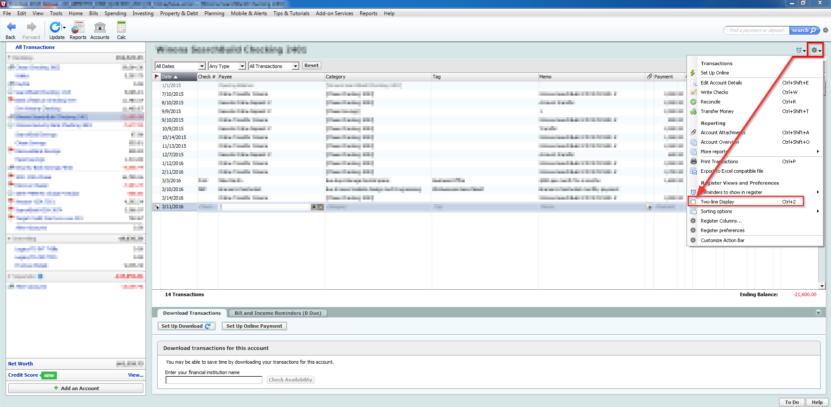

Treasury Security, municipal or corporate bond. Select this type to record the purchase of a U.S. When you select this type, you can add shares without affecting your cash balance. You may want to use this action when any shares are transferred to your account or given to you as a gift. But overall the file was created and expected transactions are in the right place.Select this type to record the purchase of shares of a stock or mutual fund. When Check Account is presented, it was used from the IIF file, those are Vendor records, Account Names: Payee, Bookstore Invoice, Office Supplies (account number and account name are shown). That's why it is marking as CHK - Check Account. Because it is a Checking Account and the money coming out, and they supposed to be Check. What happens for that type? Quickbooks tells that you must use on the IIF file general ledger Account type and then Quickbooks will look at your transactions and select transaction type for that transactions. Get sight of that Account Payroll was not in Quickbooks, it was in the file, as 'Payroll', so that Account was created. So to quickly go back, you just make a copy before importing. When you import things, something bad could happen: it could damage your file, it could do some changes, specially the IIF file, that you need to revert later. Before importing any file make sure to do backup your Quickbooks Company file: make the copy, backup, do what Quickbooks tells you to do in terms of backup.

To import the IIF file click 'File' - 'Utilities' - 'Import' - 'IIF Files'. It takes your data, as you provide and formats the file to match what Quickbooks expect. The converter does the same thing, it does not do anything accept format your file to follow IIF format. It means that you provide data and Quickbooks will just import it. IIF is considered a low-level system format. If expense/income accounts are missing, then Quickbooks will create them. So if your Vendor records are missing or they not matching, what you have, then Quickbooks will create new Vendor records. If Checking Account does not exist when you are importing the IIF file, Quickbooks will create everything, that is missing. Switch to Quickbooks and check the 'Chart of Accounts'. The CSV file from the bank is usually will have the category missing and you need to open the file in Excel and add the category column, enter doc expense, income Account Names and done 'Convert'.Ĭlick 'Convert' and create a sample.iif file. Set the Account Name, that you have in Quickbooks, not Account Number.
QUICKEN FOR MAC REVERSE LEDGER DOWNLOAD
But usually, when you download from your bank, the CSV file is for the specific account. One account, that is Bank or Credit Card Account Name, you can also specify a separate column, called Account Name and Map this column in the Mapping. So, importing to the IIF file, your file must have a category column, because the IIF file requires two accounts for each transaction. If it is a Credit Card file with reversed amounts (like expenses are positive and payments to the account are negative), then you can click 'Change +/-' to reverse all amounts. You can tell Date format, you can tell if a year is missing. If you need, on the left sidebar, there are some controls to set, to tell the Converter how your file is organized and your CSV file is created. And we will set the Account Name, that will be used for IIf file on the right-side panel, as a Checking Account Name. All transactions are for the Checking account.

It has a simple Amount column and the converter recognizes this file automatically, there is no need to remap this file. The CSV file has four transactions and it has the column, properly marked.Īlso, it has the category, which has expense account names, Payee names, that matching Vendor names in Quickbooks.
QUICKEN FOR MAC REVERSE LEDGER HOW TO
This tutorial shows how to convert a CSV file to an IIF format. CSV2IIF: Convert a CSV file to IIF and import into QuickBooks CSV2IIF: Convert a CSV file to IIF and import into QuickBooks


 0 kommentar(er)
0 kommentar(er)
